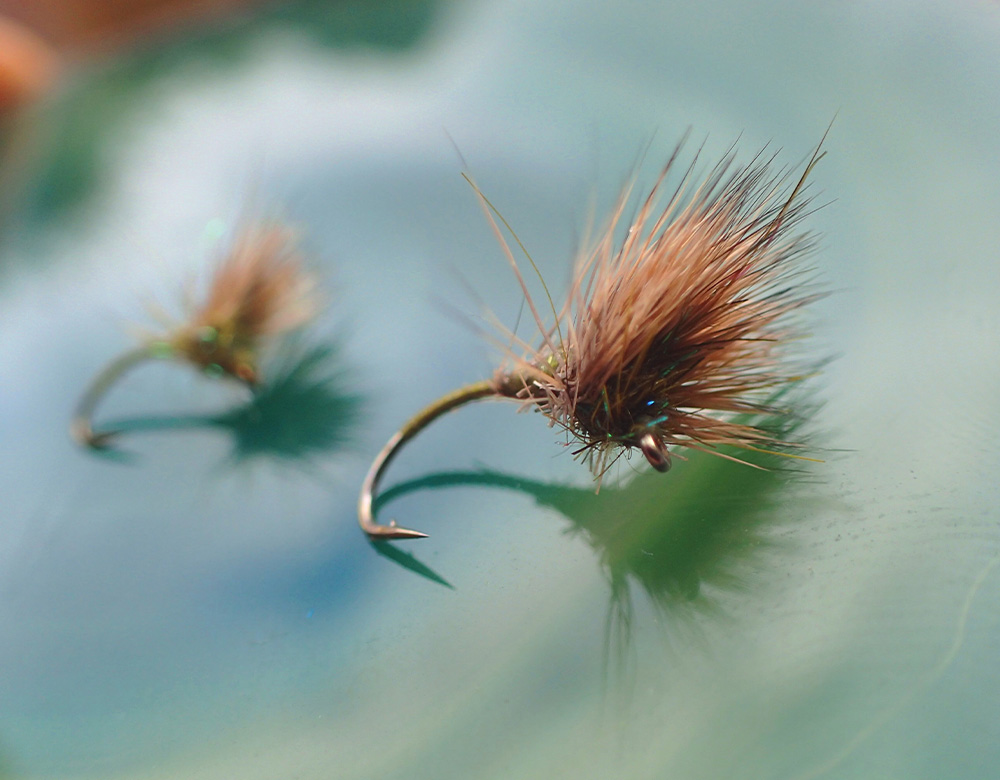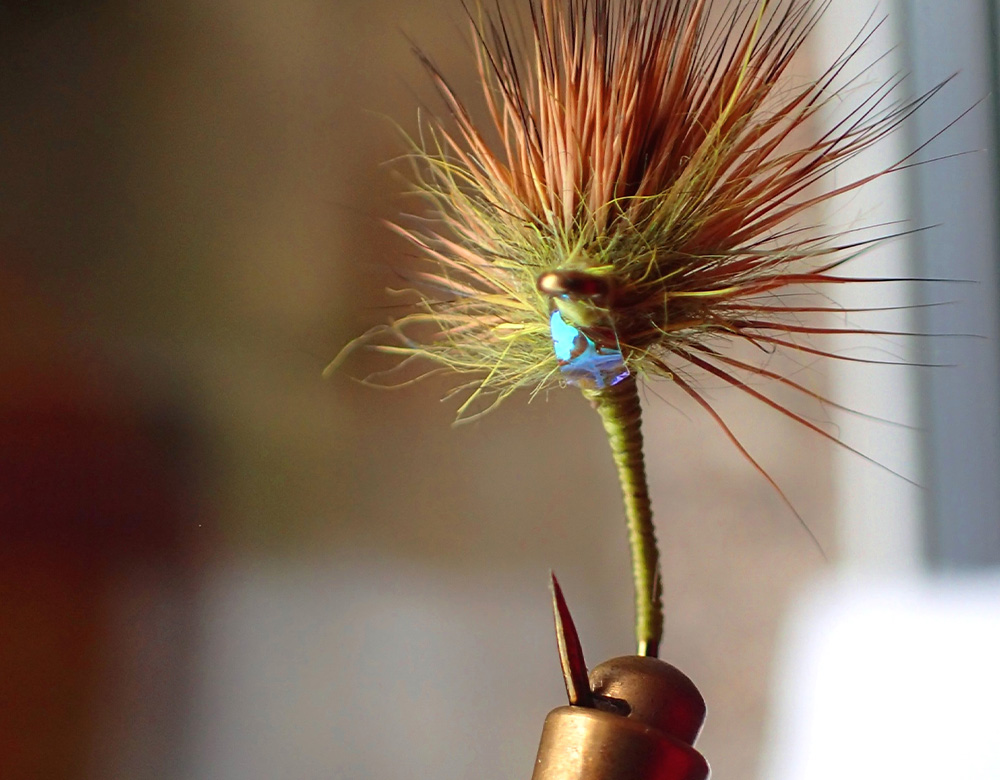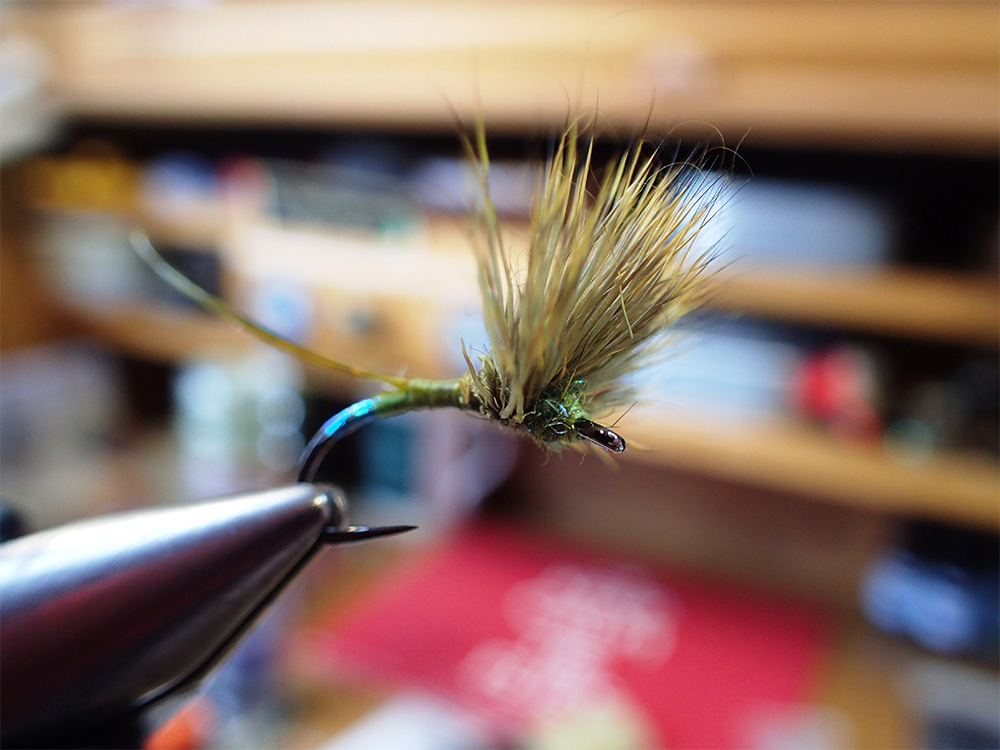Allan Liddle offers five great variations to the classic Deer Hair Emerger (DHE), with tying tips and key materials identified.

Double Wing
I tie this one predominantly as a ‘Double Decker’ style emerger for use in the faster sections of rivers where I need the fly to stand out more.
It is also a handy trick to learn as you can ‘revise’ used Deer Hair Emergers variations (DHE) with the second wing tied over the original as a quick way of getting these flies back into a fishable condition again.
Pearl Under Thorax
Tying this Deer Hair Emerger variation with a ‘Mirage’ tinsel (Veniard) ‘hot spot’ under the thorax is something I carried over from my ‘Dirtier Duster’ style where I use the pearl tinsel to split the hackle.
This forms an additional trigger and works especially well towards the beginning of a hatch as the pearl imitates the fluid given off by upright flies as they go through the process of secreting the pupa.
Size 16 Deer Hair Emerger
Demonstrates that by tying the way I have shown, you can tie this pattern down to small sizes for use especially in LDO hatches (size 14) and / or BWO (size 16/18) or emerging buzzer (size 14-16 using black thread, black hares mask / Olive Glister thorax mix).
It shows that even as small, it is possible to create a slim and in proportion abdomen without losing this to the ‘bulk’ of the deer hair wing which is still strong enough to ensure the fly floats well and sits correctly in the water’s surface.
Handy for both rivers as well as lochs and the smaller sizes good for all water types including smooth glides.
Comparadun
In truth this isn’t a real Deer Hair Emerger variation, it’s more a ‘Comparadun’ on a curved hook, but it does have the same dressed hook bend under the water surface appeal.
The elongated curve of the Partridge K14A Caddis / Emerger hook allows the tail fibres to come out from the straight section of the hook but still leaving enough of the curve below.
Although I admit the added trigger of tail fibres imitate more a dun than an emerger, however I do wonder if fish pick this out mistaking the tail as part of the pupae?
Either way it can score well when the non-tailed version has been refused. Tied in size 12 or 10 and using grey thread and squirrel fur for the thorax this is my go-to March Brown imitation but equally as deadly tied down to 14 or 16 in olive.
Mayfly (Green Drake)
Again not strictly a DHE but still in a very similar style and again the Partridge K14A works well although in the larger size 10.
For a fly that’s even bigger I love the Partridge Czech Nymph (CZSHR) in size 8 or 10 as this offers an excellent profile for this pattern. I also adopt a Golden Pheasant Crest tail which I colour with an olive or tan permanent marker pen then coat with UV to seal the colour as well as give additional strength to the tail.
Heavy tied Picric dyed deer hair (Semperfli) wing and a heavy thorax of olive hares ear and medium Olive ‘Glister’ (Veniard) brushed well out is enough to hold this fly in the surface after a liberal application of ‘Gink’.
The ‘Mirage’ tinsel (Veniard) tag is optional but can help this fly to really stand out.
Excellent for Lochs, assume also for rivers but the opportunities for Green drake fishing on running water in Scotland are rare to non-existent so in truth I’ve not used it on a river as yet.
Read more great articles online by Allan Liddle or subscribe to never miss an issue.







